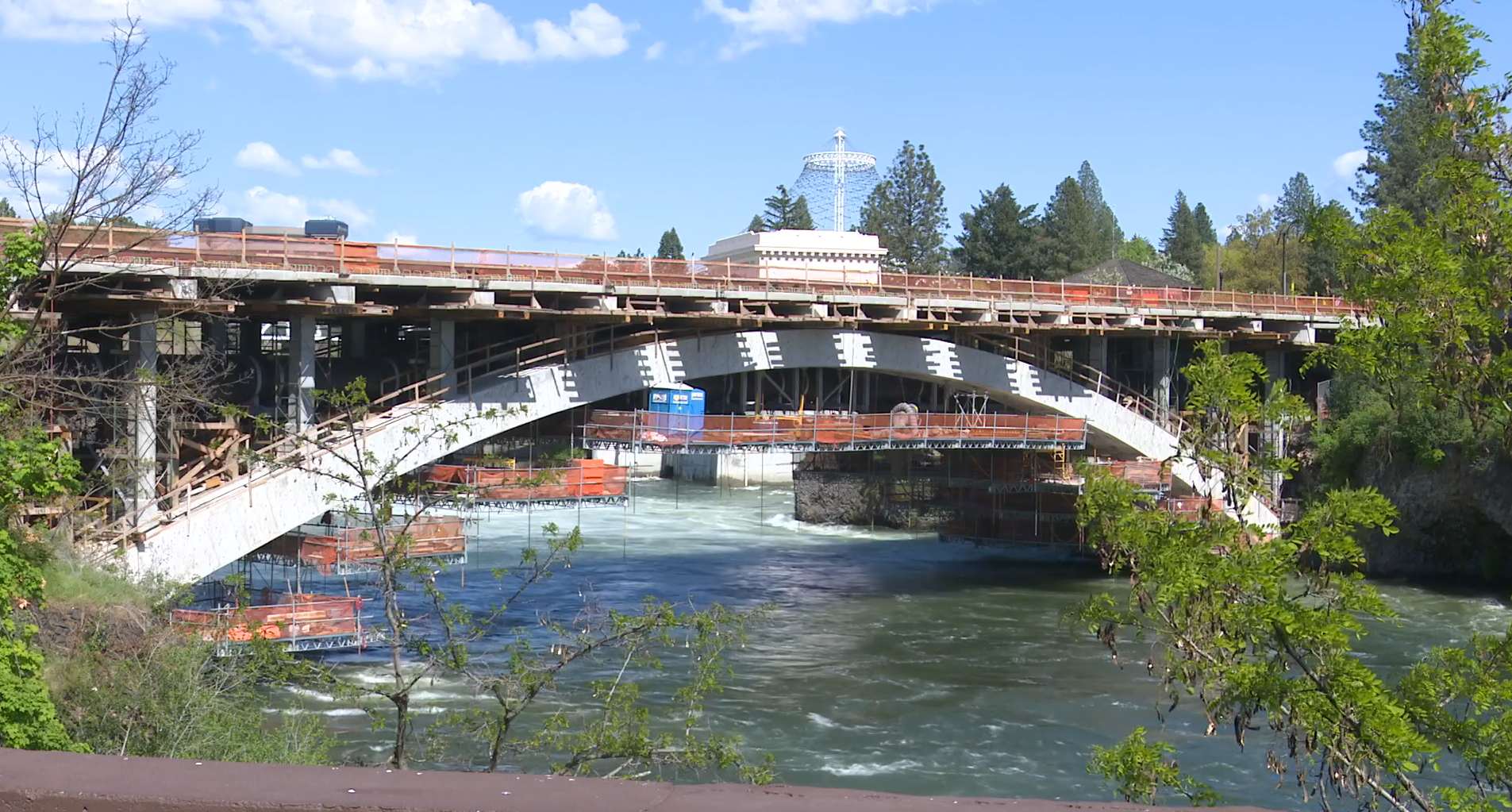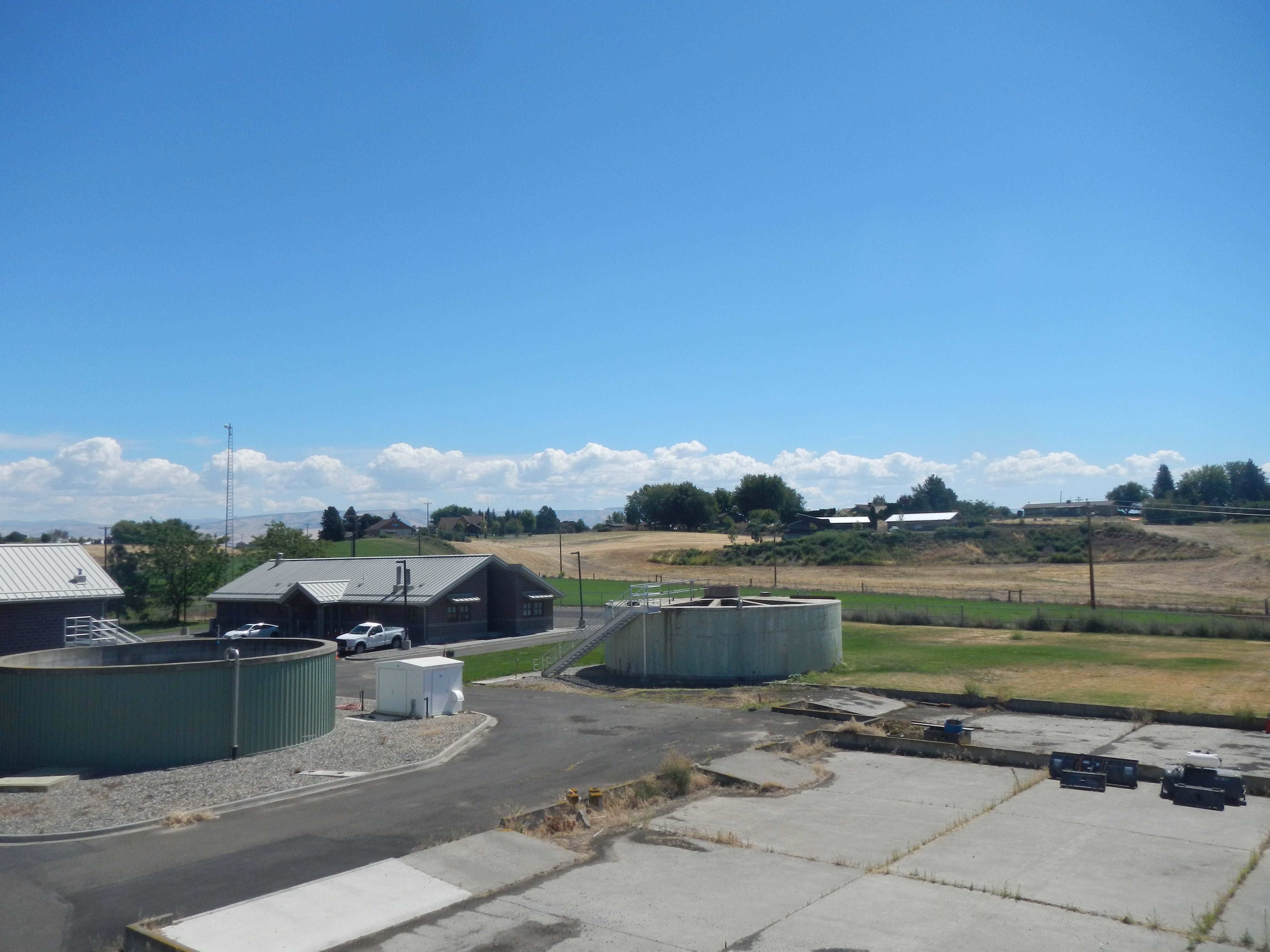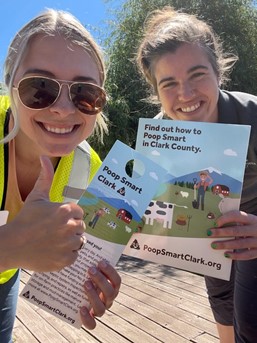
The City of Spokane replaced the Post Street Bridge sewer line with financial support from Ecology.
We're proposing to award $386 million in grants and loans for 134 high-priority clean water projects across the state. Our Water Quality Combined Funding Program supports communities by helping them upgrade wastewater treatment and sewer systems, manage polluted stormwater, and complete a variety of other projects to prevent and clean up diffuse sources of pollution, also known as nonpoint pollution.
Nearly 90% of the funding the Water Quality Program receives is passed through to local communities for environmental and infrastructure projects. Our clean water funding comes from a mix of state and federal funds dedicated for water quality improvements and protection. This includes funding from the 2021 Bipartisan Infrastructure Law (BIL) and the Capitalization Grant, which contributes funding for the Clean Water State Revolving Fund (CWSRF). For state fiscal year 2025, we received approximately $31 million in BIL supplemental funding focused on assisting small, financially disadvantaged communities and $4.5 million of forgivable principal loan funding to address emerging contaminants, such as 6PPD. Forgivable principal loans do not have to be re-paid. Additionally, EPA is providing an estimated $1 million from the Sewer Overflow and Stormwater Reuse Municipal Grants Program, which Ecology is including in the Water Quality Combined Funding program.
We accept applications for funding every year from August to October. In recent years, we established the Small Community Project Priority List. The goal of this list is to create a simplified funding process to minimize the barriers small, financially-disadvantaged communities may face in accessing funding for their wastewater treatment facilities. When these communities need multiple years of funding for wastewater treatment facility projects, they no longer need to apply every year. Instead, they are placed on this list to ensure predictable financial support for these important infrastructure projects. This helps provide local governments with certainty and relieves the burden on rate payers to cover the full cost of these investments. There are 14 small community projects on this year’s draft offer list, including the Onsite Sewage Regional Loan Program which supports low-income homeowners in repairing and replacing their septic systems.
Clean water project highlights
Wastewater
Ecology plans to support College Place with a draft offer to fund a General Sewer Plan update.
Fifty wastewater projects are proposed to receive approximately $327 million in grants, low interest loans, and forgivable loans. Seventeen of the projects qualify for special hardship assistance to help prevent large increases in the sewer bills for residents. In addition, two projects will refinance a high interest rate loan. Refinancing existing sewer debt can help improve the financial condition of wastewater funds in these communities. Highlights from our draft offer list include:
- The City of Aberdeen has three projects proposed for a total $2.6 million for planning and designs related to an urgent need for upgrades to prevent failures at their wastewater treatment system. Aberdeen is on the Small Community Project Priority List, meaning Ecology will work closely with the City to facilitate funding so the projects can continue to the next steps. The projects include designs for necessary replacements and upgrades for existing equipment; emergency power for the entire treatment system; and studies to identify sources of excess water that flows into the system during heavy rains and high tide events.
- The City of Republic has a draft offer of $4.4 million for design and construction. Excessive flows in Republic’s sewer system cause lagoon overloads and direct sewage discharges to the Sanpoil River. This project addresses those excessive flows to eliminate the risk of sewage discharge to the Sanpoil River.
Nonpoint
Thirty-two projects are set to receive a total of $35 million in grants to address nonpoint pollution, including that from onsite sewage systems. Nonpoint pollution has a significant impact on water quality; it comes from diffuse sources instead of an identifiable pipe. Project highlights include:
- Mid-Columbia Fisheries Enhancement Group has a draft offer of $357,000 to work in partnership with private landowner to install native riparian plants and a grass filter strip on seven acres along a 1,500 stream-ft section of the lower Yakima River. The site abuts an active agricultural field and contains few woody plants, providing minimal shade to the river and a side channel. Despite the river being impaired, it provides passage, spawning, and rearing habitats for chinook, coho, and sockeye salmon, steelhead, and Pacific lamprey. These actions to improve water quality will benefit human health, as well as improve habitat for these ecologically, economically and culturally valuable species.
- Trout Unlimited is set to receive $499,000 to restore floodplain connectivity, improve water quality, and restore habitat functions along 2.2 miles of Hangman Creek, immediately upstream of its confluence with Rock Creek. Restoration actions will include floodplain reconnection techniques, such as beaver dam analogs, installation of large woody debris and post-assisted log structures, reconnection of, side channels and installation of native vegetation. This will maximize potential cold-water inputs and create cold water refugia for fish to address high temperatures in Hangman Creek
- The Spokane Conservation District is also on the list to receive $1 million in grant funding for two proposals to build on previous work to prevent stream bank erosion and install riparian plantings along Hangman Creek. The proposals include two strategies: direct restoration, as pictured above, as well as an innovative incentive program. The Hangman Creek Riparian Buffer Incentive Program provides rental rates with long-term contracts for agricultural riparian land taken out of production. This program was intended to be complimentary to existing available programs such as the Spokane Conservation District Commodity Buffer Program and Farmed Smart Certification Program. Learn more about our work in Hangman Creek.
One runoff event eroded approximately 16,000 tons of stream bank into Hangman Creek. Spokane Conservation District restored the site, among others in project funded in 2021. Additional sites are proposed on this draft offer list.
Poop Smart Clark connects residents to information and financial resources to correct pollution, drive social change, and increase adoption of best management practices.
Onsite Sewage Systems (OSS)
There are draft funding offers for three programs and one project, totaling $8 million to address onsite sewage systems.
- Clark Conservation District developed the “Poop Smart Clark” program in collaboration with Clark County: Public Works, Public Health, Clean Water District, and WSU Extension. This project (draft offer $500,000) builds on a previous program in Clark County focused on the East Fork Lewis River Watershed. This proposal expands the program county-wide, and includes pollution source identification, targeted outreach, and voluntary implementation of best management practices, with a focus on septic systems. By incentivizing ongoing maintenance, more systems can be kept in compliance rather than being pushed into failure.
Stormwater
Forty-six communities and port districts will split $53 million to manage and reduce stormwater pollution. Proposed work includes plans, designs, and construction.
City of Tumwater Bioretention Facility slows stormwater down so it can filter into the ground.
- City of Tumwater has two stormwater proposals totaling $357,000 for an Enhanced Maintenance Plan and stormwater facility design for four linear bioretention facilities. The plan will focus on nutrient reduction in Percival Creek, Black Lake, Black Lake Ditch, and Budd Inlet. The bioretention facilities will provide treatment for metals and suspended solids. An added benefit to this project is flow control for the entire 52.4-acre catchment area. One bioretention facility will replace a tire-lined ditch which may be leaching pollutants, including 6PPD, into Percival Creek.
- The City of Bremerton has a draft offer of $1.4 million to construct a stormwater treatment retrofit system at the location of the existing Francis Street outfalls into Kitsap Lake. The proposed system will provide treatment for the 69 acre drainage basin that discharges into the lake. The system is classified as having a High Treatment Potential to remove 6PPD from stormwater, according to a recent Ecology study.
We want to hear from you
We are holding a public comment period on the draft offer list until March 4, 2024. Please submit public comments using our online comment form.
Or you can attend a public webinar where we will share information about the projects on the draft offer list
Public webinar
Feb. 14, 2024 1 p.m.
Zoom Meeting Link
We will respond to all comments received during the comment period and notify all commenters when we publish our final funding list. The final funding list is expected to be published this Summer.
We are sharing this draft offer list before the Washington State Legislature has passed the 2023-25 Biennial Budget. In addition, the Federal Fiscal Year 2024 (FFY24) federal grants for CWSRF and Section 319 have not been awarded. We based the estimated funding levels on the Governor’s proposed biennial budget released in December 2023 and the estimated FFY24 grant awards for CWSRF and Section 319. This means funding levels are estimates that may change. If the final funding for any of the programs is greater than the amounts estimated, Ecology will offer the additional funds to eligible projects in ranked priority order. If the final funding for any of the programs is less than the amounts estimated, Ecology will reduce the funding offers in reverse ranked priority order. In addition, public comments and possible changes in projects may affect the amounts and projects proposed for funding.
More information
For more information, including access to an interactive map of funded projects and access to the draft list please visit the Water Quality Combined Funding Program Funding Cycles webpage.
Ecology grant and loan offers of more than $12 million require Environmental Justice Assessments under Washington’s Healthy Environment for All (HEAL) Act (RCW 70A.02). Assessments are intended to help Ecology equitably distribute environmental benefits and address environmental and health disparities. The Environmental Justice Assessment includes inviting Tribal consultation and outreach to people at high risk for poor health because of environmental conditions. In this funding cycle, we propose six offers above $12 million. All six of these proposed loans will undergo an Environmental Justice Assessment.
For more information and to submit feedback on these Environmental Justice Assessments, please contact Faith Wimberley, Water Quality Environmental Justice Planner at faith.wimberley@ecy.wa.gov.

